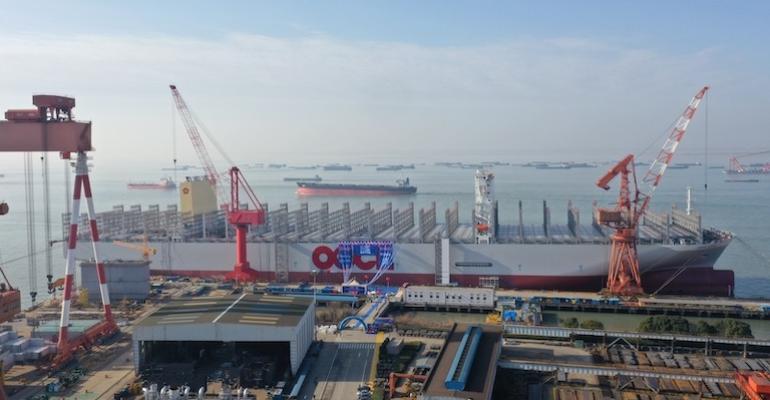“Today about 80% of the orderbook is liner company owned. Historically liner companies owned about 55% of ordered tonnage. This swing displays that liner companies, have focused investment on newbuildings over the past few years, reducing exposure to the charter market,” noted Braemar researcher Jonathan Roach.
Market analyst Jon Monroe argues that carriers are “strategically pivoting”, increasing the proportion of their owned vessels compared to chartered ones.
“The anticipated capacity surge in ocean shipping lines may be more subdued than expected. This shift in strategy could potentially lead to an increase in rates rather than a decrease,” argues Monroe.
Other analysts are more sceptical of this view with Dynamar’s Darron Wadey pointing out that the return of chartered-in tonnage can certainly play a role in controlling costs, as part of wider cost cutting measures, in reaction to prevailing market conditions.
“It would be very difficult for returning chartered-in tonnage to sustain freight rates on their own. To be clear, returning vessels is a sign that the market fundamentals are weak,” added Wadey.
Anyway, the return of chartered tonnage cannot happen collectively, with returns largely dependent on the period of charter and when those periods end.
Wadey reminds us: “During the 2021-22 period of capacity shortage, shipowners took the opportunity to lock-in longer terms, with many of those deals still running now.”
Moreover, there are no guarantees that it will be cheaper to operate owned tonnage compared to chartered vessels, he adds, with vessels in the current orderbook fixed at high prices, with elevated interest rates, and therefore costs.
Charterers, who also work in the same supply and demand dynamic as owners, will likely reduce prices too.
“Whilst we are a long way from such a situation, the ultimate expression of this came in the darkest periods of the post-2008 financial crises when chartered-in ships were cheaper to run than owned ones. In some instances. This led to the incongruous situation of carriers laying up owned tonnage in favour of operating chartered units,” said Wadey.
“Let’s be clear, these are not the signs of a strong market: any operational capacity that is effectively redundant, however temporary, does not suggest a market in rude health.”
Copyright © 2024. All rights reserved. Seatrade, a trading name of Informa Markets (UK) Limited.
Add Seatrade Maritime News to your Google News feed.  |

